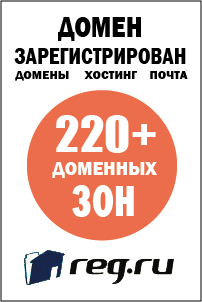Хаммуд А.
Email: Hammoud663@scientifictext.ru
Хаммуд Ахмад – магистрант, кафедра медико-технических информационных технологий, Московский государственный технический университет им. Н.Э. Баумана, г. Москва
Аннотация: целью данной статьи является использование подхода Лагранжа-Эйлера (ALE) для взаимодействия жидкость-структура для моделирования кровотока в артерии. Прогнозирование кровотока и его влияния на артерии требует моделирования взаимодействия жидкости и структуры с деформируемой сеткой. Для моделирования скорости жидкости и давления используется алгоритм, который позволяет вычислять скорость жидкости и давление, используя явное интегрирование по времени.
Для структуры типа твердое тело моделируются элементы с пятью точками интегрирования по толщине для точного представления изгибающих эффектов. Такая модель может быть использована для изучения профиля потока и волн давления, когда они распространяются вдоль артерий. В статье начало имитации импульса давления моделировалось на входе в трехмерный прямой артериальный кровеносный сосуд, и результирующий динамический ответ в виде распространяющейся пульсовой волны через стенку анализировался и сравнивался. Была выявлена хорошая согласованность между численными результатами и теоретическим описанием идеализированной артерии.
Ключевые слова: ALE, CFD, кровоток, взаимодействие жидкости со структурой, моделирование.
A STUDY OF BLOOD FLOW MODELING IN ARTERY USING ALE FORMULATION
Hammoud A.
Hammoud Ahmad – Master Student, DEPARTMENT MEDICAL AND TECHNICAL INFORMATION TECHNOLOGIES, BAUMAN MOSCOW STATE TECHNICAL UNIVERSITY, MOSCOW
Abstract: using Arbitrary Lagrangian Eulerian (ALE) formulation for fluid–structure interaction for modeling blood flow in artery is the main idea of the research. We present the algorithm which allows computing fluid velocity and pressuring using explicit time integration, when fluid simulation velocity–pressure formulation is used. And we do the same thing for the structure shell type elements with five points integration through the thickness to accurately represent bending effects. Because of the structure can be distorted, we can use an elasticity material model for the mesh to prevent high mesh distortion, and we will use an explicit contact algorithm based on penalty method, for fluid–structure coupling. If we want to study the profile of the flow and pressure waves as they propagate along the arteries, we can use such pattern. In the research, the onset of a pressure pulse was simulated at the entrance of a 3D straight artery blood vessel and the resulting dynamic response in the form of a propagating pulse wave through the wall was analyzed. A strong connection was found between the numerical results and the theoretical description of an idealized artery. And for implementing the material constitutive models specific for vascular applications also has been accomplished.
Keywords: ALE, CFD, FSI, Modelling, Blood Flow.
Список литературы / References
- Aquelet N., Souli M. and Olovson L., 2006. “Euler Lagrange coupling with damping effects: Application to slamming problems,” Comput. Methods Appl. Mech. Eng. 195,110–132.
- Benson D.J., 1992 “Computational methods in Lagrangian and Eulerian hydrocodes,” Computer Methods in Applied Mech. and Eng. 99, 235–394.
- Bergel D., 1961 “The static elastic properties of the arterial wall,” The Journal of Physiology, DOI: 10.1113/jphysiol. 1961.sp006686.
- Erchiqui F., Souli M. and Ben Yedder R., 2007. “Non isothermal finite-element analysisof thermoforming of polyethylene terephthalate sheet: Incomplete effect of the formingstage,” Polym. Eng. Sci. 47(12), 2129
- Fan J. and Mancini L., 2009. “Option Pricing with aggregation of physical models and nonparametric statistical learning,” Journal of American Statistical Association 104,1351–1372.
- Fung Y.C., 1967. “Elasticity of soft tissues in simple elongation,” Am. J. Physiol. 213 1532–1544.
- Gijsen F.J.H., Van de Vosse F.N. et al., “The influence of the non-Newtonian properties of blood on the flow large arteries: Steady flow in a carotid bifurcation model,” J. Biomech. 32, 601–608.
- Gupta K., 2011. “A 2010 update by the Infectious Diseases Society of America and the European Society for Microbiology and Infectious Diseases,” Clinic Infection Disease 52(5).
- Hallquist J.O., 1998. “LS DYNA Theory Manual,” Livermore Software Technology Corporation.
- Holzapfel G.A., 2006. “Determination of material models for arterial walls from uniaxial extension tests and histological structure,” Theor. Biol. 238, 290–302.
- Khan M.U., Moatamedi M. and Souli M., 2008. “Multiphysics out of position airbag simulation,” Int. J. Crashwortiness 13, 159–166.
- Khawaja H.A., Scott S.A., Virk M.S. and Moatamedi M., 2012. “Quantitative analysis of accuracy of voidage computations in CFD-DEM simulations,” J. Comput. Multiphase Flows 4 (2), 183–192.
- Kuntz M. and Meader F., 2004. “Simulation of fluid–structure interactions in aeronautical applications,” European Congress on Computational Methods in Applied Sciences and Engineering, 3rd FENET Annual Meeting, December,
- Leiden,M.A. D.P., The Netherlands: E.J. Brill. OCLC.
- Longatte E. and Verreman V. et al., “Time marching for simulation of fluid structure interaction problems, J. Fluids Struct. 25 (1), 95–111.
- Messahel R., Cohen B., Souli M. and Moatamedi M., 2015. “Numerical and experimental investigation of water hammers in nuclear industry,” J. Multiphys.
- Migliavacca F., Petrini L. et al., “A predictive study of the mechanical behavior of coronary stents by computer modeling,” Med. Eng. Phys. 27, 13–18.
- Moatamedi M., Souli M. and Al-Bahkali E., 2015. “Structure modeling of blood flow in vessels,” MCB Molecular and Cellular Biomechanics 11(4), 221–234.
- Park T., Jung H. and Yun I.D., Non rigid 2D registration of fluoroscopic coronary artery image sequence with layered motion Conference (San Diego, California, United States, 2016).
- Pericevic I and Moatamedi M., 2007. “Application of the penalty coupling method for the analysis of blood vessels,” Eur. J. Comput. Mechan. 16(2), 537–548.
- Richens D., Field M. et al., 2004. “A finite element model of blunt traumatic aortic rupture,” Eur. J. Cardiothorac. Surg. 25, 1039–1047.
- Souli M. and Zolesio J. P., 1993. “Shape derivative of discretized problems,” Comput Methods Appl. Mech. Eng. 108, 187–199.
- Souli M., Ouahsine A. and Lewin L., 2000. “Arbitrary Lagrangian Eulerian formulation for fluid–structure interaction problems,” Comput. Methods Appl. Mech. Eng. 190(5–7), 659–675.
- Sun Z., Howard D. and Moatamedi M., 2005. “Modeling of foot wear and ground interaction,” Int. J. Strain 41(3), 113–117.
Ссылка для цитирования данной статьи
|
Тип лицензии на данную статью – CC BY 4.0. Это значит, что Вы можете свободно цитировать данную статью на любом носителе и в любом формате при указании авторства. |
||
|
Электронная версия. Хаммуд А. МОДЕЛИРОВАНИЕ КРОВОТОКА В АРТЕРИИ С ИСПОЛЬЗОВАНИЕМ ПОДХОДА ЛАГРАНЖА-ЭЙЛЕРА// Вестник науки и образования №9 (63), 2019. [Электронныйресурс].URL: http://scientificjournal.ru/images/PDF/2019/VNO-63/modelirovanie-krovotoka.pdf (Дата обращения:ХХ.ХХ.201Х). Печатная версия. Хаммуд А. МОДЕЛИРОВАНИЕ КРОВОТОКА В АРТЕРИИ С ИСПОЛЬЗОВАНИЕМ ПОДХОДА ЛАГРАНЖА-ЭЙЛЕРА// Вестник науки и образования №9(63), 2019, C. {см. журнал}. |
||
Поделитесь данной статьей, повысьте свой научный статус в социальных сетях
| Tweet |



